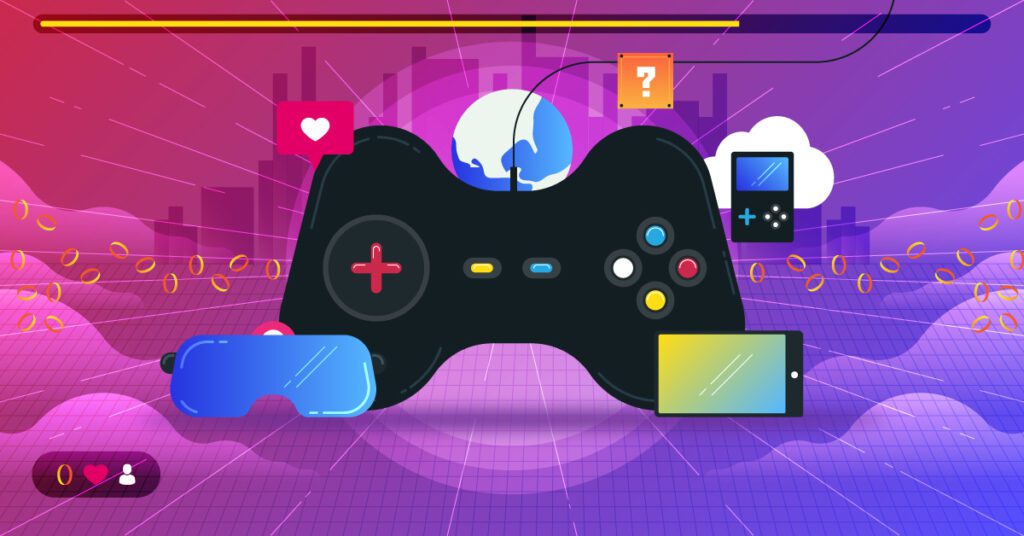Emerging hardware and software tools are pushing the boundaries of gaming. The biggest advancements in hardware have been virtual and augmented reality, while procedural generation and artificial intelligence (AI) have been the biggest advancements in software. Virtual reality allows for full immersion into a game world, while augmented reality overlays elements of a game onto reality, as Pokemon Go did. Procedural generation allows for the creation of game content on the fly, seen in No Man’s Sky, while AI creates more challenging and immersive gameplay experiences. These advancements are allowing developers to create more complex and ambitious games than ever before.
The Future of Game Development: How Advanced Hardware and Software Tools are Pushing the Boundaries of Gaming
Gaming has come a long way since the early days of Pong and Space Invaders. Today, the industry is a multi-billion-dollar global phenomenon that shows no signs of slowing down. With each passing year, new developments in hardware and software are changing the way games are created, played, and experienced.
Emerging Hardware Technologies
The biggest change in gaming hardware over the past few years has been the emergence of virtual and augmented reality. VR has been around for a while, but it’s only recently that the technology has become affordable and accessible to the wider public.
With VR hardware like the Oculus Rift and the HTC Vive, players can fully immerse themselves in a game world, exploring and interacting with their surroundings in a way that was previously impossible. The potential for this technology is huge, and we can expect to see more and more VR experiences in the coming years.
On the other hand, augmented reality (AR) has already made a big impact with the success of Pokemon Go. AR uses a mobile device’s camera to overlay game elements onto the real world, allowing players to catch Pokemon in their local park or battle monsters on their living room table. As this technology continues to develop, we can expect to see even more creative and innovative uses in future games.
Advanced Software Tools
The software used to create games has also seen some significant advancements in recent years. One trend that’s been gaining traction is procedural generation, which involves using algorithms to create game content on the fly. This technique has been used for years to generate terrain in games like Minecraft, but it’s now being applied to other aspects of game design as well.
For example, Hello Games’ No Man’s Sky used procedural generation to create an entire galaxy of planets, each with its own unique environment and ecosystem. This technique allowed the game to offer an unprecedented level of exploration and discovery, and it’s likely we’ll see more games using procedural generation in the future.
Another area of software development that’s seen big strides is artificial intelligence (AI). Game AIs have always been notoriously dumb, but recent advancements in machine learning and neural networks are allowing developers to create smarter, more realistic opponents.
Games like Alien: Isolation and F.E.A.R. have shown the potential of AI to create truly terrifying enemies that can adapt to the player’s actions and strategies. As AI technology continues to develop, we can expect even more immersive and challenging gameplay experiences.
Pushing the Boundaries of Gaming
The combination of advanced hardware and software tools is allowing game developers to push the boundaries of what’s possible in gaming. In the past, games were limited by what the hardware could handle, but today’s technology is making it possible to create more complex and ambitious game worlds.
One example of this is CD Projekt Red’s upcoming game, Cyberpunk 2077. The studio has promised a game world that’s even more expansive than their previous hit, The Witcher 3, thanks to improved hardware and a new game engine that allows for more complex systems and interactions.
Another example is Hideo Kojima’s Death Stranding, which promises to be a completely new type of game experience. Kojima is known for pushing the boundaries of game design, and with Death Stranding he’s aiming for a game that bridges the gap between film and game, with a focus on storytelling and player choice.
Conclusion
The future of game development is exciting and full of potential. Advanced hardware and software tools are allowing developers to create more immersive, complex, and ambitious games than ever before, and we can expect to see even more groundbreaking titles in the years to come.
Whether it’s the emergence of VR and AR, the use of procedural generation and advanced AI, or the creation of new genre-defying experiences, the future of gaming is bright and full of possibility.
